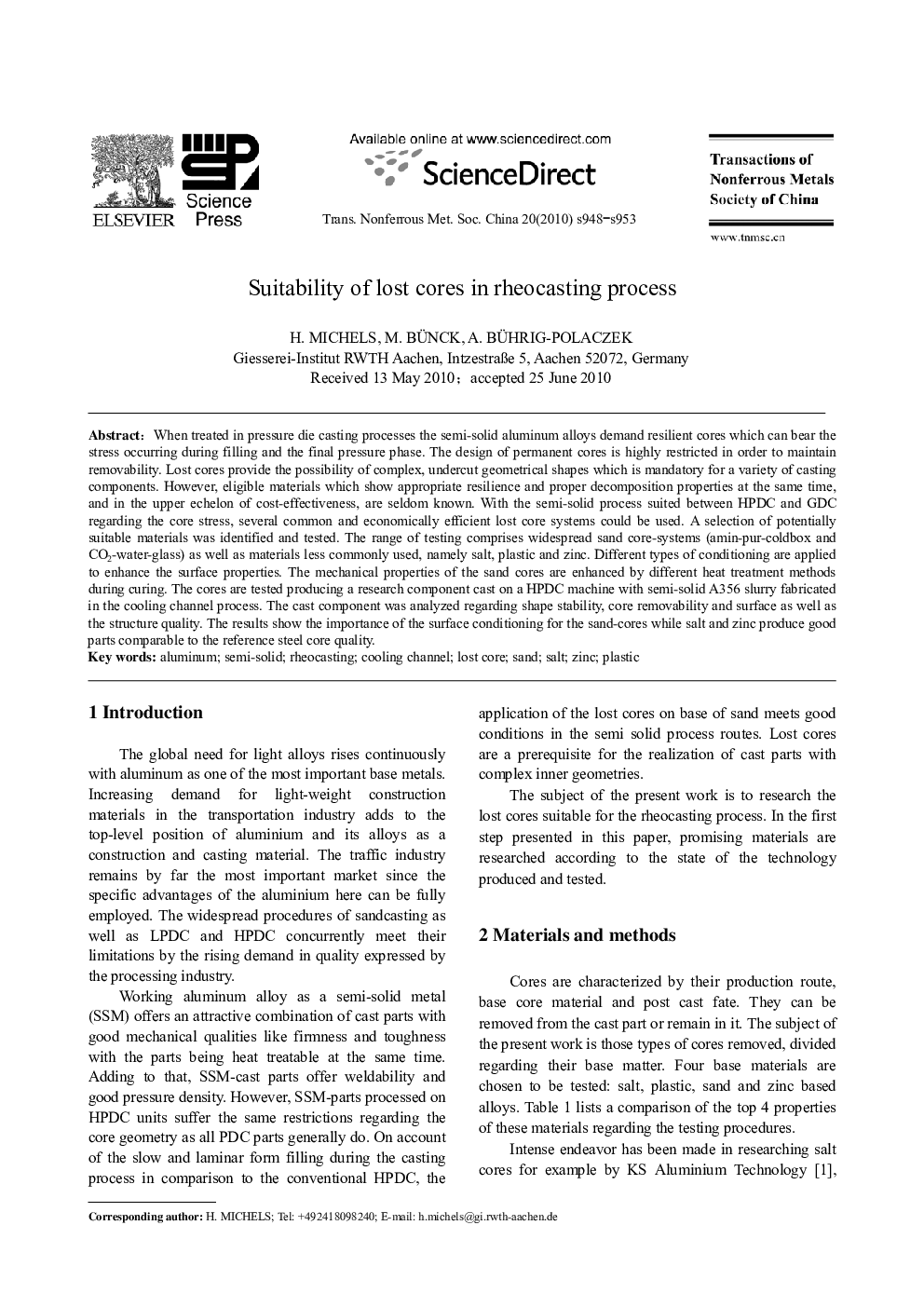| کد مقاله | کد نشریه | سال انتشار | مقاله انگلیسی | نسخه تمام متن |
|---|---|---|---|---|
| 1638538 | 1517029 | 2010 | 6 صفحه PDF | دانلود رایگان |

When treated in pressure die casting processes the semi-solid aluminum alloys demand resilient cores which can bear the stress occurring during filling and the final pressure phase. The design of permanent cores is highly restricted in order to maintain removability. Lost cores provide the possibility of complex, undercut geometrical shapes which is mandatory for a variety of casting components. However, eligible materials which show appropriate resilience and proper decomposition properties at the same time, and in the upper echelon of cost-effectiveness, are seldom known. With the semi-solid process suited between HPDC and GDC regarding the core stress, several common and economically efficient lost core systems could be used. A selection of potentially suitable materials was identified and tested. The range of testing comprises widespread sand core-systems (amin-pur-coldbox and CO2-water-glass) as well as materials less commonly used, namely salt, plastic and zinc. Different types of conditioning are applied to enhance the surface properties. The mechanical properties of the sand cores are enhanced by different heat treatment methods during curing. The cores are tested producing a research component cast on a HPDC machine with semi-solid A356 slurry fabricated in the cooling channel process. The cast component was analyzed regarding shape stability, core removability and surface as well as the structure quality. The results show the importance of the surface conditioning for the sand-cores while salt and zinc produce good parts comparable to the reference steel core quality.
Journal: Transactions of Nonferrous Metals Society of China - Volume 20, Supplement 3, September 2010, Pages s948-s953